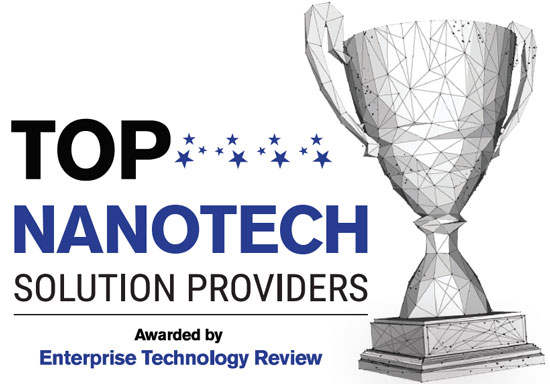
What are the Benefits and Applications of Nanotechnology?
Enterprise Technology Review | Tuesday, October 06, 2020

After above and beyond 20 years of nanoscience research, nanotechnology applications deliver in conventional and unconventional ways on nanotechnology’s aim to benefit society.
FREMONT, CA: Nanotechnology helps to massively enhance and revolutionize numerous technology and industry sectors such as information technology, medicine, homeland security, transportation, energy, food safety, and environmental science.
Here are three points to show the growing list of benefits and applications of nanotechnology.
 Everyday Materials and Processes
Everyday Materials and Processes
The benefits of nanotechnology rely on the fact that it is possible to customize materials at small scales to gain specific properties, therefore massively extending the materials science toolkit. Nanotechnology helps to make the materials more robust, lighter, more durable, more reactive, more sieve-like, or better electrical conductors, among the other traits. Numerous everyday commercial products are currently on the market and in daily use that relies on nanoscale materials and the processes:
• Nanoscale materials are starting to allow washable, durable “smart fabrics” with flexible nanoscale sensors and electronics coupled with health monitoring capabilities, solar energy capture, and energy harvesting through movement.
• Nanoscale additives to or surface treatments of fabrics can give lightweight ballistic energy deflection in personal body armor or help them resist wrinkling, staining, and bacterial growth.
Electronics and IT Applications
Nanotechnology has contributed to significant advances in computing and electronics, resulting in faster, smaller, and portable systems, managing and storing larger amounts of data. These ever-evolving applications include:
• Using magnetic random access memory (MRAM), computers can “boot” almost instantly. MRAM is powered by nanometer‐scale magnetic tunnel junctions and can quickly and effectively save data during a system shutdown or enable resume‐play features.
• Ultra-high-definition displays and televisions are now being sold using quantum dots to produce more vibrant colors while being more energy-efficient.
Medical and Healthcare Applications
Nanotechnology is broadening its medical tools, knowledge, and therapies that are currently available to the clinicians. The application of nanotechnology in medicine, nanomedicine draws on the natural scale of biological phenomena to deliver precise disease prevention, diagnosis, and treatment solutions. Here are some examples of recent advances in this area:
• Better imaging and diagnostic tools powered by nanotechnology are paving the way for earlier diagnosis, individualized treatment options, and improved therapeutic success rates.
• Nanotechnology is being studied to diagnose and treat atherosclerosis, or the buildup of plaque in arteries. In one technique, the researchers created a nanoparticle that copies the body’s “good” cholesterol, also called HDL (high-density lipoprotein), to shrink plaque.
See Also: Top Food Safety Tech Companies in Europe
Read Also









